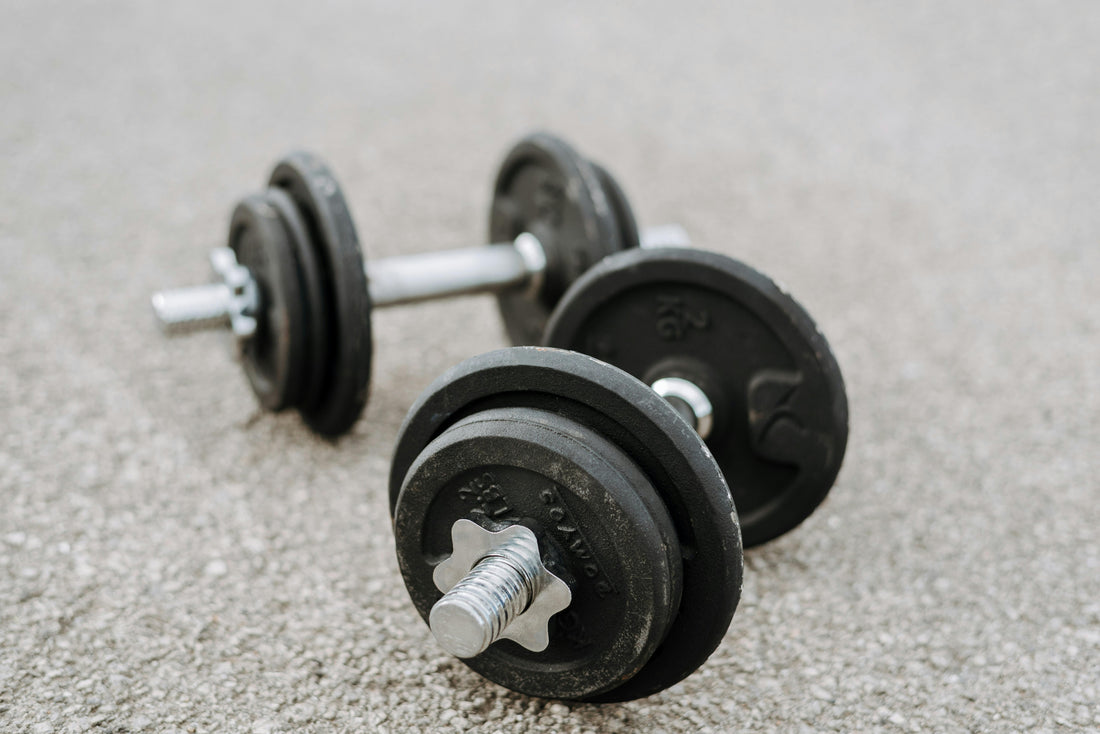
Resistance Training After 50
Share
Resistance Training After 50
As we grow older, staying strong isn’t just about looking good—it’s about staying independent, active, and full of life. One of the best ways to do that is Resistance training.
Click here to see this inspiring video of Joan, a woman in her 70's achieving amazing results through resistance training.
Video credit: GMA / YouTube. This video is embedded from YouTube for educational and motivational purposes only. All rights remain with the original creator.
Resistance (or strength) training is one of the most powerful tools we have to fight age-related muscle loss, protect our bones, and boost our brain health. And the best part? It’s never too late to start.

Just 2–3 sessions per week can improve muscle strength, power, and walking speed in older adults.
A 2024 study found that retirees who lifted weights maintained better leg strength four years later than those who didn’t train at all (Andersen et al., 2024).
Resistance training also boosts brain health by increasing a chemical called BDNF (brain-derived neurotrophic factor), which supports memory and learning (Coelho-Júnior et al., 2024).
It even helps with mental health, lowering depression scores and improving mood (Coelho-Júnior et al., 2022).
What Counts as Resistance Training
You don’t need to lift heavy barbells to gain the benefits. Resistance training simply means exercising against a force to make your muscles work. That force can be your own body, a resistance band, a dumbbell, or even water.
Here are some easy ways to get started:
Bodyweight Exercises
- Step-ups
- Chair squats
- Wall push-ups
- Glute bridges
Great for beginners and can be done at home.
Resistance Bands
- Seated rows
- Bicep curls
- Lateral leg raises
Light on the joints and easy to travel with.
Watch this video on resistance band exercises by The British Heart Foundation
Video credit: British Heart Foundation / YouTube. This video is embedded from YouTube for educational and motivational purposes only. All rights remain with the original creator.
Dumbbells & Kettlebells
- Overhead presses
- Goblet squats
- Deadlifts
Great for improving grip strength and bone density.
Functional Strength Training
- Carrying groceries
- Sit-to-stand exercises
- Step-ups with a weighted vest
Mimics real-life tasks and boosts daily function.
Machines (Gym-based)
- Leg press
- Chest press
- Lat pulldown
Safer for some older adults, especially with joint concerns.
Resistance Training Isn’t Just for the Body
One lesser-known benefit of resistance training? It can also support your cognitive health. Research shows regular strength training increases BDNF and improves executive function and memory, even in people over 70. That means better focus, problem-solving, and fewer “senior moments.”
How to Begin—Safely and Successfully
The best approach is:
- 2–3 sessions per week
- 2–3 sets per exercise
- 8–12 repetitions
- Focus on major muscle groups: legs, back, arms, core
Start with bodyweight or bands, and build up gradually. Always prioritise good form over heavy weights.
If you’re unsure, talk to a physiotherapist or a qualified personal trainer who specialises in older adults.
Simple Equipment to Get You Started
If you’d like to train at home, here are a few useful tools:
- Resistance bands
- Adjustable dumbbells
- A sturdy chair or step
- Weighted vest (for more advanced users)
- Suspension straps (like TRX)
Check out our recommended strength tools here:
Affiliate Disclosure:
As an Amazon Associate, I earn from qualifying purchases. This means that if you click on a link to a recommended product and make a purchase, I may receive a small commission at no extra cost to you. I only promote products I genuinely believe can benefit my readers. Thank you for supporting this blog—it helps me continue to provide valuable content on healthy ageing and wellbeing.
Resistance Bands:
Light:
Resistance Loop Exercise Bands with Instruction Guide and Carry Bag
Resistance Tube Bands with Handles 12 Piece Set with Instruction Manual
Medium:
Top Rated Multi Level Resistance Band Set
Heavy:
Dumbbells:
Weighted Vest:
Weighted vest with reflective stripe
Resistance training is more than a workout—it’s a form of empowerment. It builds strength, confidence, and resilienceat every age. Whether you're 40s 50, 70, or 90, your muscles are ready to respond.
So, grab a band, lift a dumbbell, or stand up from that chair a few more times today. Small steps now lead to big gains later.
Because ageing strong is the new ageing gracefully.
Resouces
-
Andersen, L. L., Pedersen, M. T., Hansen, M. B., Bruun, L., Kristiansen, J., & Zebis, M. K. (2024). Long-term effects of resistance training initiated at retirement age: A 4-year follow-up of the LIve active Successful Ageing (LISA) randomized controlled trial. BMJ Open Sport & Exercise Medicine, 10(2), e001899. https://doi.org/10.1136/bmjsem-2023-001899
-
Coelho-Júnior, H. J., Calvani, R., Gonçalves, I. O., Apóstolo, J., Fernandes, A., Picca, A., & Marzetti, E. (2022). Effects of resistance training on depression and physical function in older adults: A systematic review and meta-analysis. Experimental Gerontology, 162, 111748. https://doi.org/10.1016/j.exger.2022.111748
-
Coelho-Júnior, H. J., Gonçalves, I. O., de Oliveira Gonçalves, L., de Paula, N. A., & Uchida, M. C. (2024). Resistance training increases brain-derived neurotrophic factor (BDNF) in older adults: A systematic review. Archives of Gerontology and Geriatrics, 119, 105239. https://doi.org/10.1016/j.archger.2024.105239
-
Disclaimer: This blog post is for informational and educational purposes only and is not intended as medical advice. Always consult your doctor or qualified health professional before making changes to your diet, exercise, or health routines.
This blog provides independent recommendations and is not affiliated with or endorsed by the British Heart Foundation.”